Birds symbolize freedom and eternal life. With 433 resident and migratory bird species, Buckeye State is the real emblem of liberty. Woodlands covered about 95% of the state at the time of settlement. It is not the same now, but forests cover a third of the area and offer home and shelter for numerous resident and migratory birds of Ohio.
- Ohio Birds
- Noteworthy Birds of Ohio
- Common Birds of Ohio
- Ohio Landscape and Birding Seasons
- Ohio Birding Hotspots
- Ohio Birds Field Guides
- Ohio Bird Checklist
- Specific Bird Species
Ohio Birds
Of the 433 officially recorded bird species in Ohio, 40 have only been seen once, while three species, Carolina Parakeet, Passenger Pigeon, and Ivory-billed Woodpecker, are extinct. At least 180 bird species, including neotropical migrants, breed here each year.
The unique bird species in Ohio include:
- Great-horned Owl, the owl with the largest wing range and the fiercest predator in the US
- Trumpeter Swan, the biggest bird in Ohio
- Ruby-throated Hummingbird, the smallest bird and the only breeding hummingbird in Ohio
- Great Black-Backed Gull, the largest gull in Ohio
- Downy Woodpecker, the smallest backyard woodpecker in the US
- Eastern-screech Owl, the smallest owl in Ohio
- Red-tailed Hawk, the most common hawk in Ohio
- Mourning Dove, the most numerous bird in Ohio and second abundant nationwide
- Northern Bobwhites, the only native quails in the state and the most common birds of southwest Ohio
- Upland Sandpiper, a nesting bird in Ohio that migrates the longest distance of 11,000 miles (17,700 km) round trip a year
Four bird species, including House Sparrows, Rock Pigeon, House Finch, and European Starling, are non-native but widespread in this state.
The Northern Cardinal is the state bird of Ohio since 1933. Nowadays, you can see this red beauty in rural and urban settings of all eighty-eight counties. It is one of America’s favorite backyard songbirds that sing year-round.
Noteworthy Birds of Ohio
Even though hundreds of bird species live in this state, the dedicated birder prefers finding the most prominent birds in Ohio once they come here.
Ruddy Duck (Oxyura jamaicensis)
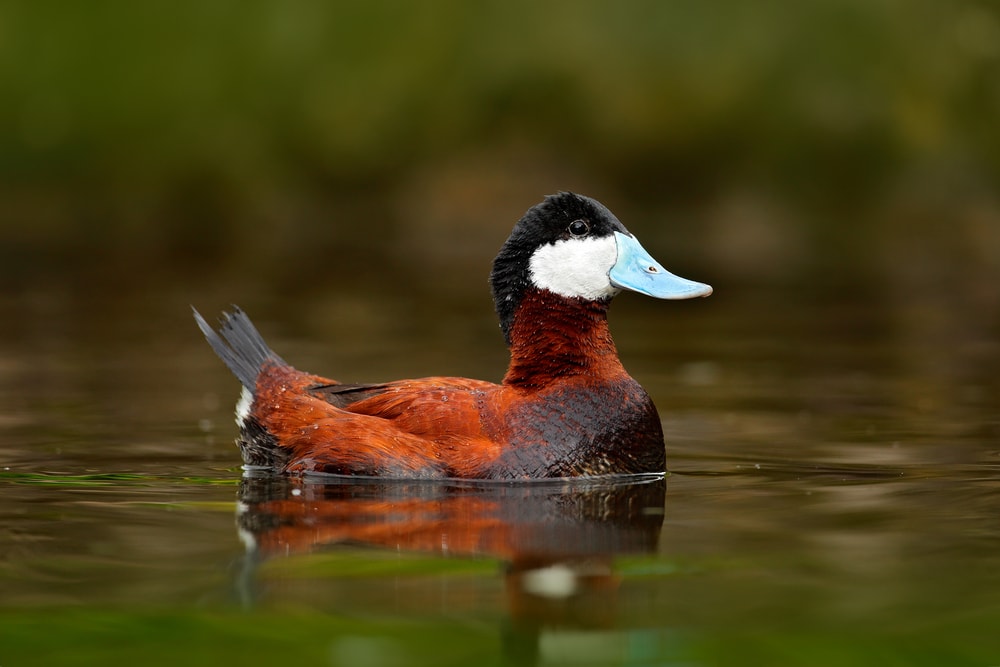
Lake Erie is the breeding range of colorful Ruddy Duck with a bright blue bill. You can consider yourself privileged if you have an opportunity to enjoy this migrant’s courtship and strutting movements since it is a rare breeder in Ohio. Come here in winter and try to spot a few possible couples in the western marshes.
Summer Tanager (Piranga rubra)
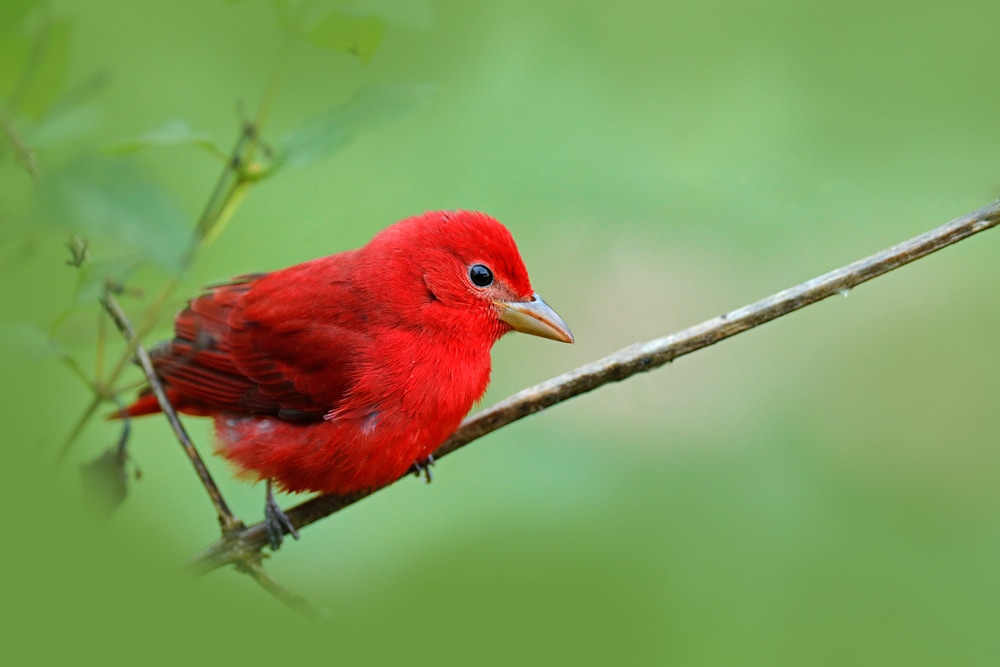
Summer Tanager is one of the red birds in Ohio and probably the reddest bird worldwide. Its breeding range is north of this state, while you can see it throughout Ohio south in summer. The most probable spot for this beauty is located in upland oak-hickory woodlands.
Great Black-Backed Gull (Larus marinus)
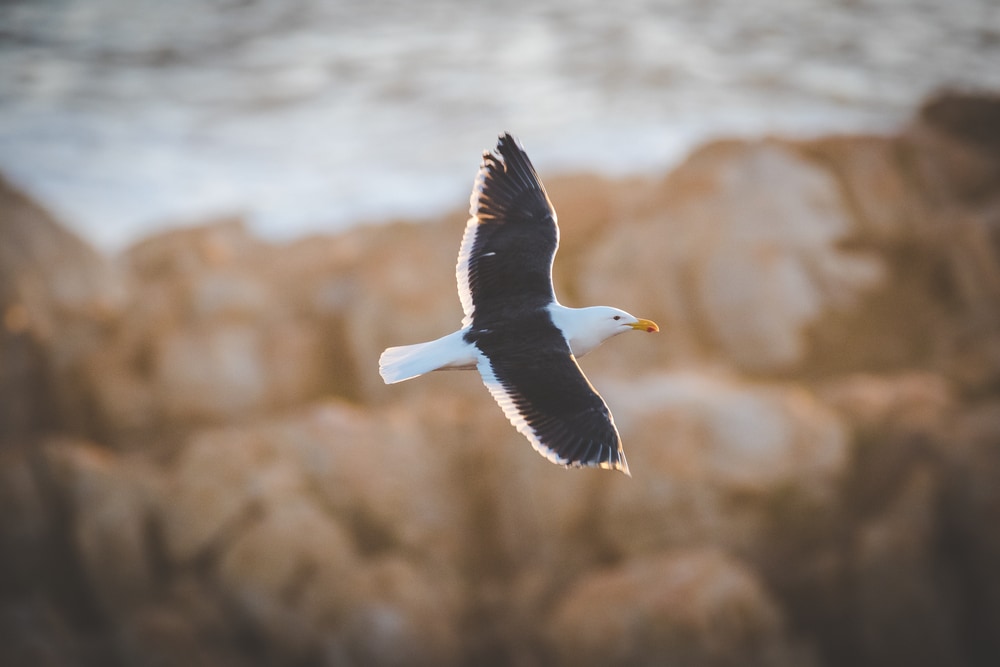
The so-called king of gulls, the Great Black-backed Gull, is the largest type among nineteen gull species ever seen in Ohio. You can find it in urban areas, including Cleveland, and along the northern Lake Erie shoreline in winter, but it is rarely a resident in this state in summer.
Tundra Swan (Cygnus columbianus)
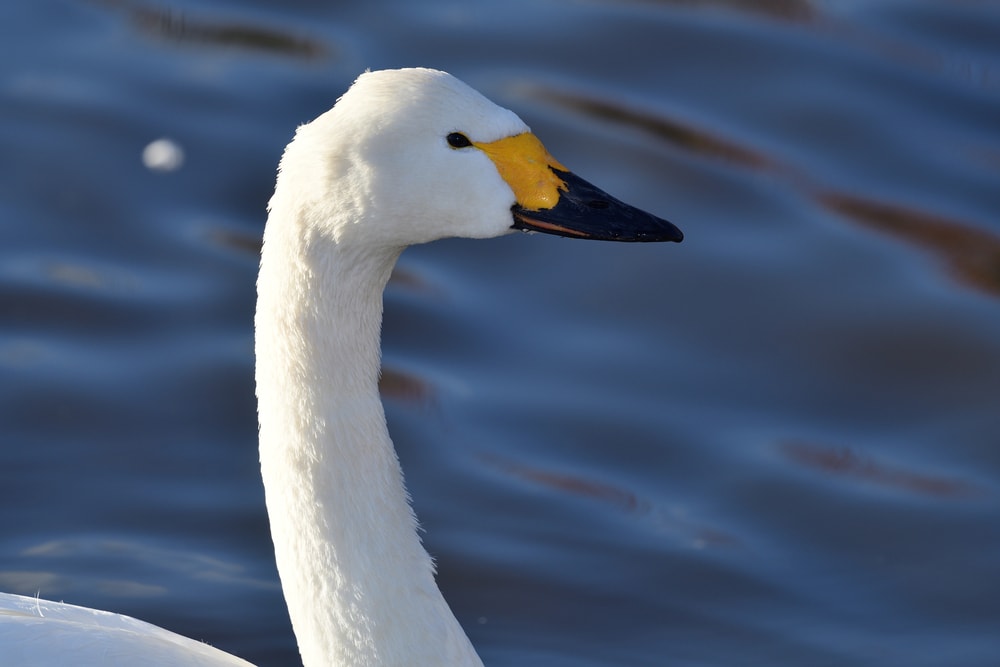
Tundra Swan is an uncommon migrant and only swan species native to Ohio that only migrates through its territory without a tendency to stay there throughout all seasons. The best chance to see hundreds of these giant northern Ohio birds is along the Lake Erie shoreline during fall migration.
Red-shouldered Hawk (Buteo lineatus)
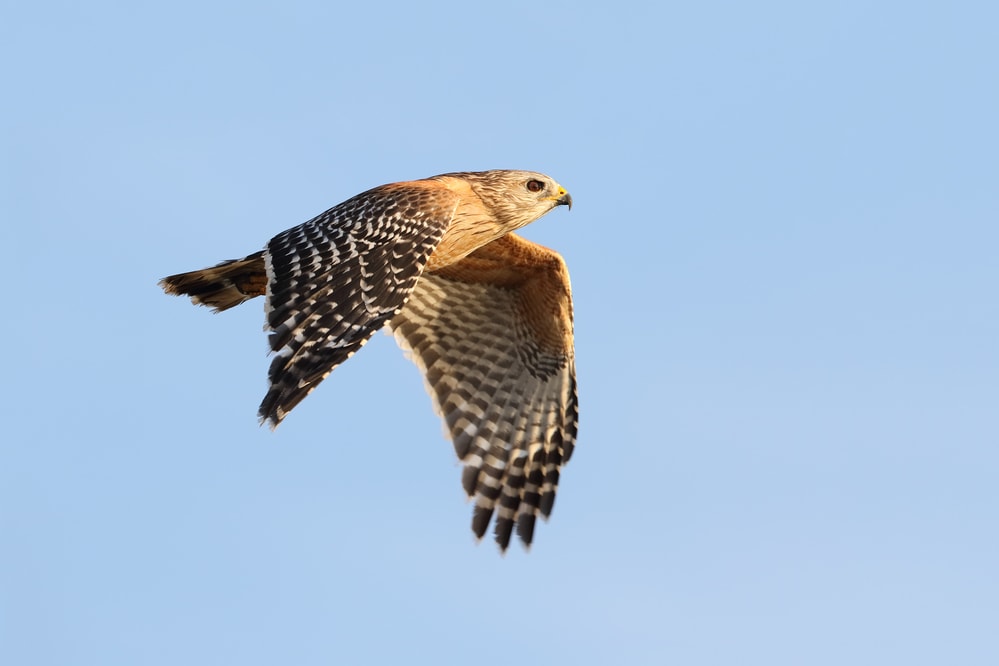
Red-shouldered Hawk is a typical medium-sized resident found throughout Ohio. Even though it is actually a forest bird, you can often see this powerful creature while routinely hunting for prey along field edges and riparian. It is not usual to see this bird in western Ohio due to poor forestation.
Cerulean Warbler (Setophaga cerulea)
Delicate blue-and-white Cerulean Warblers are common Ohio birds and dear guests in riparian areas, southern harbors, and dense oak-hickory forests. The hot spots include Shawnee State Forests and Lake Hope State Park. It is crucial to protect and a privilege to see this species nowadays since their number decreases over time.
Indigo Bunting (Passerina cyanea)
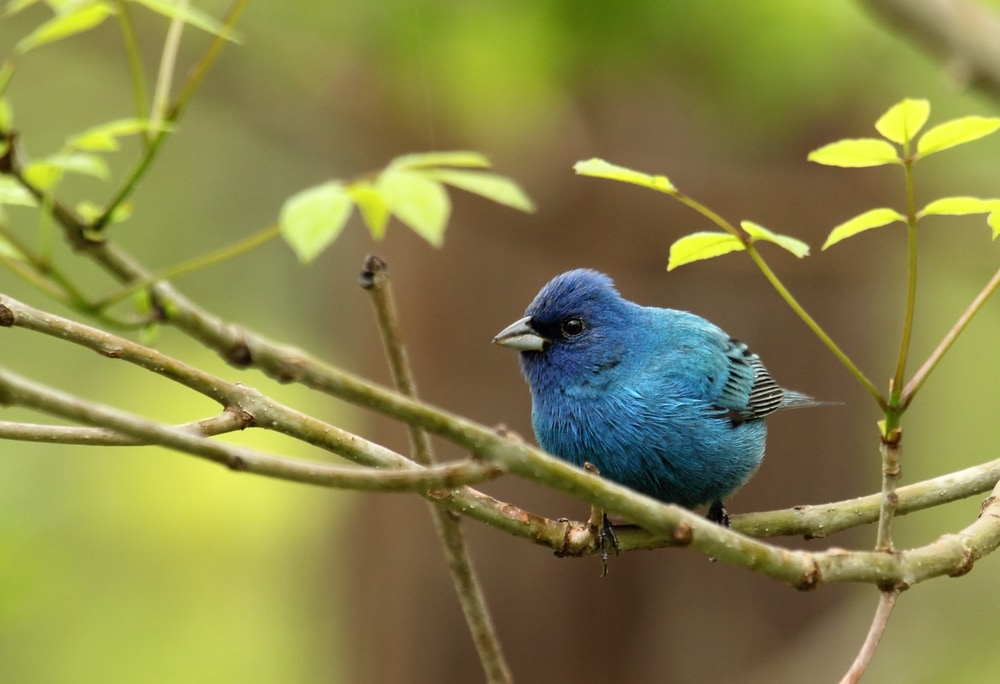
Indigo Buntings are ubiquitous types of birds in Ohio living here since the 19th century. They enjoy spending time on conspicuous spots, especially in the countryside, orchards, abandoned fields, and woodland edges. It is estimated that approximately 80 million of these buntings sing complex whistles in pairs throughout the summer.
Northern Bobwhite (Colinus virginianus)
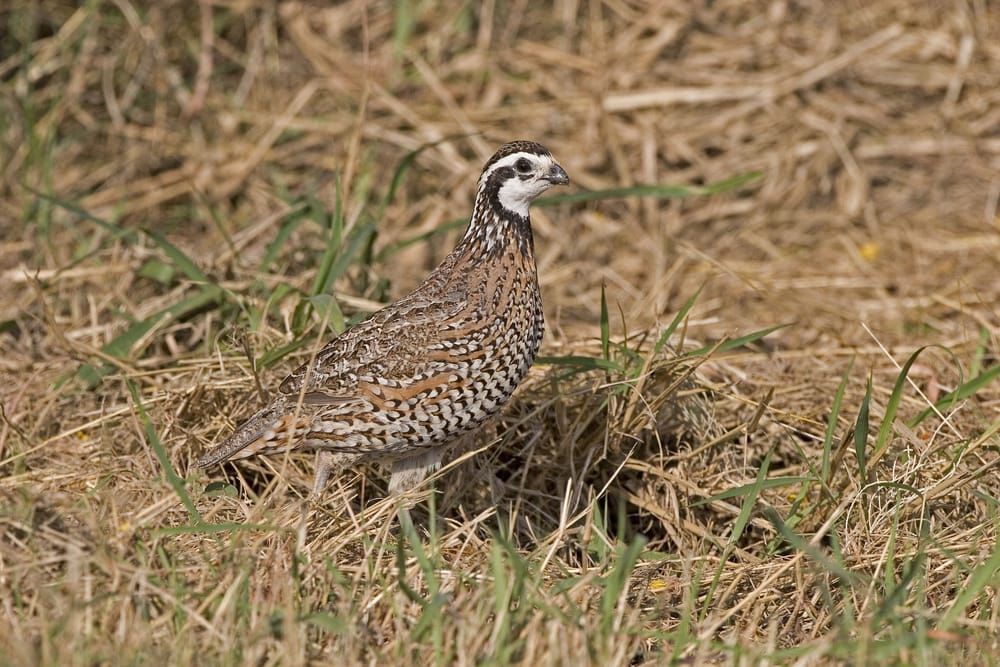
Northern Bobwhites are inconspicuous Ohio native birds that enjoy living in the state’s southwestern corner, including Woodbury wildlife areas and Crown City. This species is actually the only native quail you can readily find in open woodlands, grasslands, and brushy fields year-round. Unfortunately, their number has significantly declined recently.
Carolina Wren (Thryothorus ludovicianus)
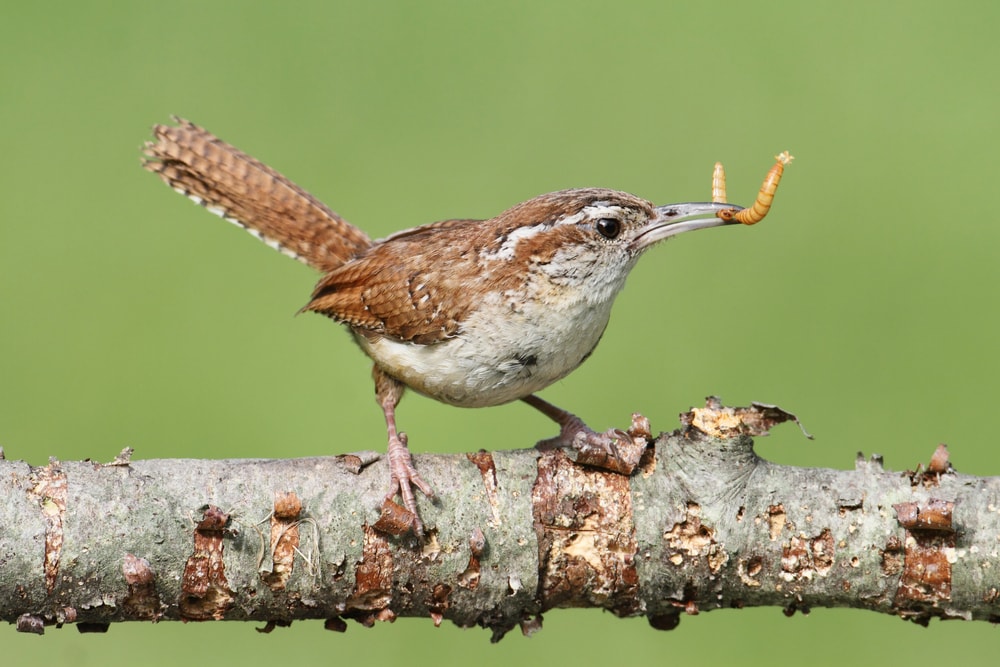
Sassy and noticeable chestnut-colored Carolina Wren enjoys visiting yard feeders in Ohio year-round. Even though it is a southerner, you can hear this resident’s loud song even in the north state part during the winter months. It often chooses woodland edges and wildlife areas to stay, but you can also see it in suburban areas, especially parks.
Henslow’s Sparrow (Centronyx henslowii)
Obscure Henslow’s Sparrows are common birds of Ohio, but you can quickly overlook them. It is hard to locate their nests, usually located in thick grass clumps. The best option to find this species is to go to the southeastern state part and check old pastures, grasslands, and hayfields in Crown City.
Common Birds of Ohio
Here is a list of the most common birds in Ohio based on Ebird recorded views data. That means birders have really seen them in nature or their feeders.
Northern Cardinal (Cardinalis cardinalis)
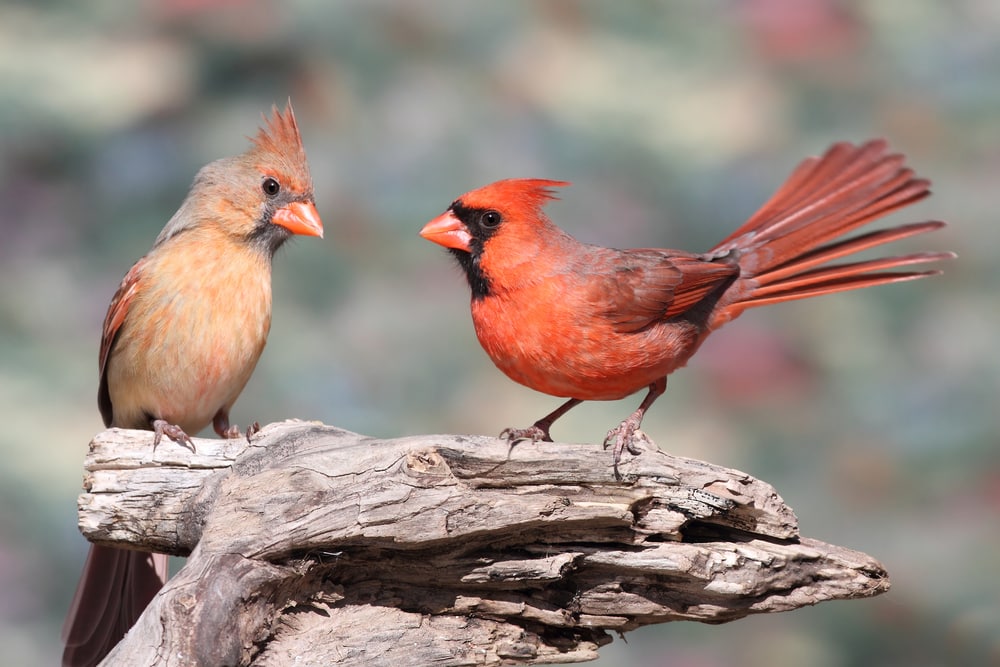
Northern Cardinal is the Ohio State Bird and one of the most popular songbird species in the US. It is widespread throughout this state the whole year, and you can see this red beauty in your backyard feeder in winter. Since the bird is quickly adaptable, you can equally spot it in both woodlands and suburbs.
American Robin (Turdus migratorius)
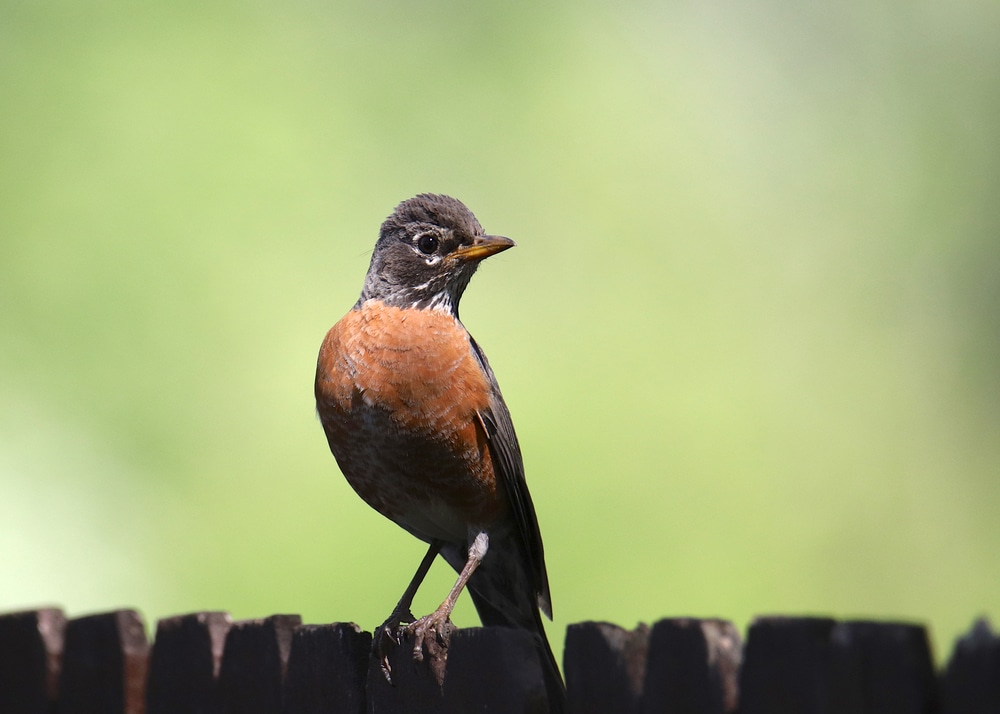
Gray American Robin with the orange-red breast is among the most abundant and familiar Ohio songbirds. You can see it almost anywhere in spring and summer, especially in the earliest morning hours. Besides, you can hear this lovely bird singing on the lawns year-round and can often spot it visiting backyard feeders.
Blue Jay (Cyanocitta cristata)
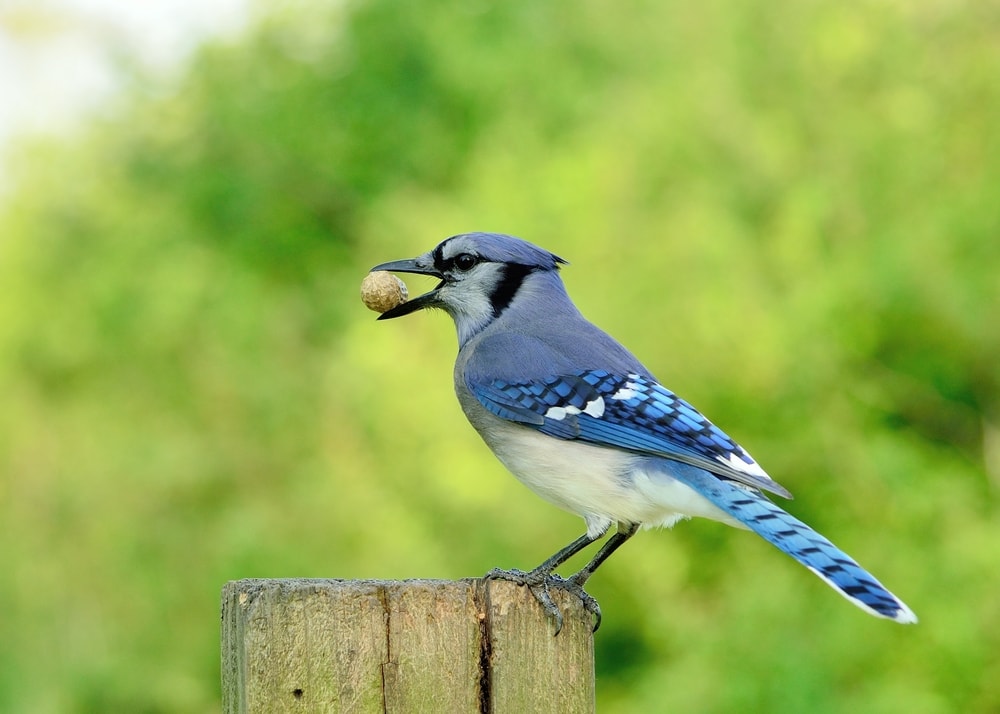
Crafty Blue Jay is a loud woods resident and regular feeder visitor that mimics Red-shouldered Hawk calls to drive other species away from food sources. It is a migratory bird and a winter resident in Ohio. Spring and fall are the best seasons for watching numerous flocks, especially along Lake Erie in May.
Mourning Dove (Zenaida macroura)
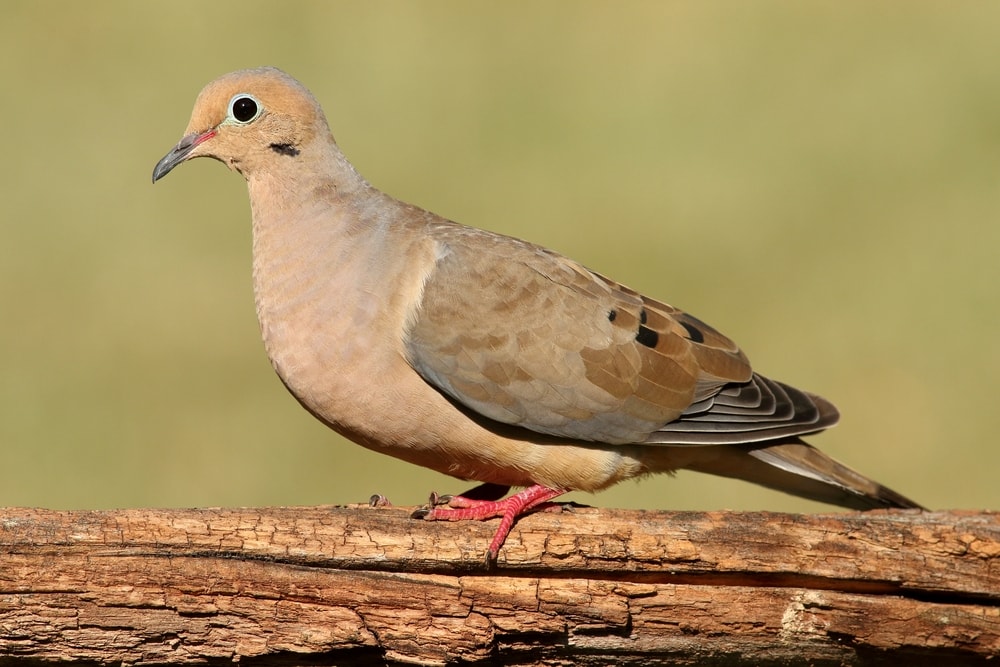
Gentle Mourning Dove is probably the most beloved dove in North America. You can see these widespread and abundant backyard birds eating seeds around feeders. It prefers living in the open countryside, including open woods and pastures. You can effortlessly find this species around Paint Creek Lake and Killdeer Plains.
Song Sparrow (Melospiza melodia)
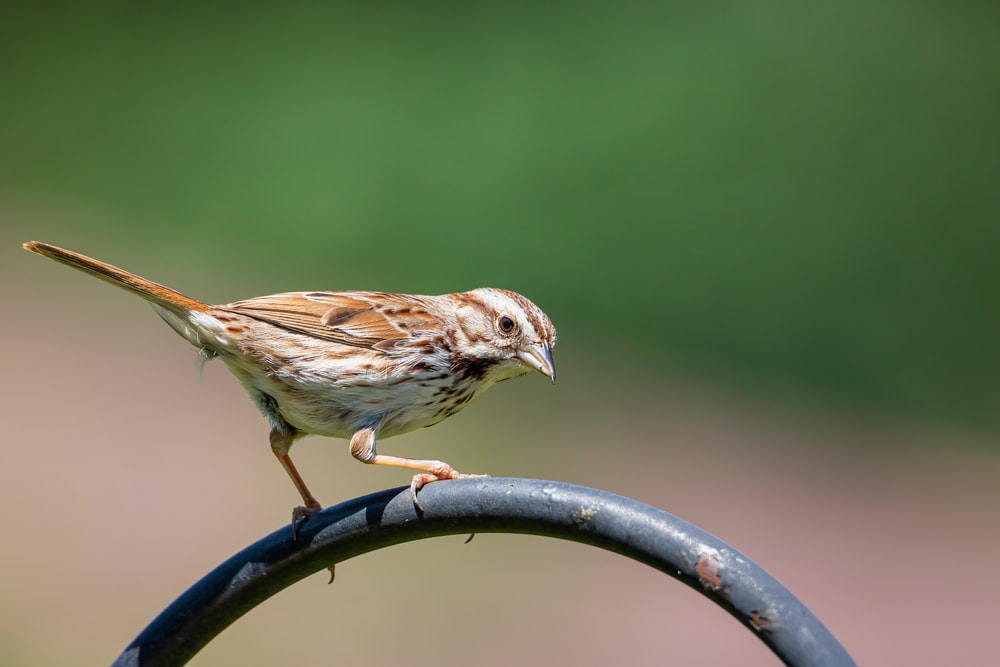
Song Sparrow is the most common and widespread sparrow in Ohio, and you can hear males singing over 2,300 songs a day at open to semi-open landscape year-round. Practically, there is no place in this state without them. They usually nest under grassy tufts or low bushes, but you can also expect to see them near your feeders.
American Goldfinch (Spinus tristis)
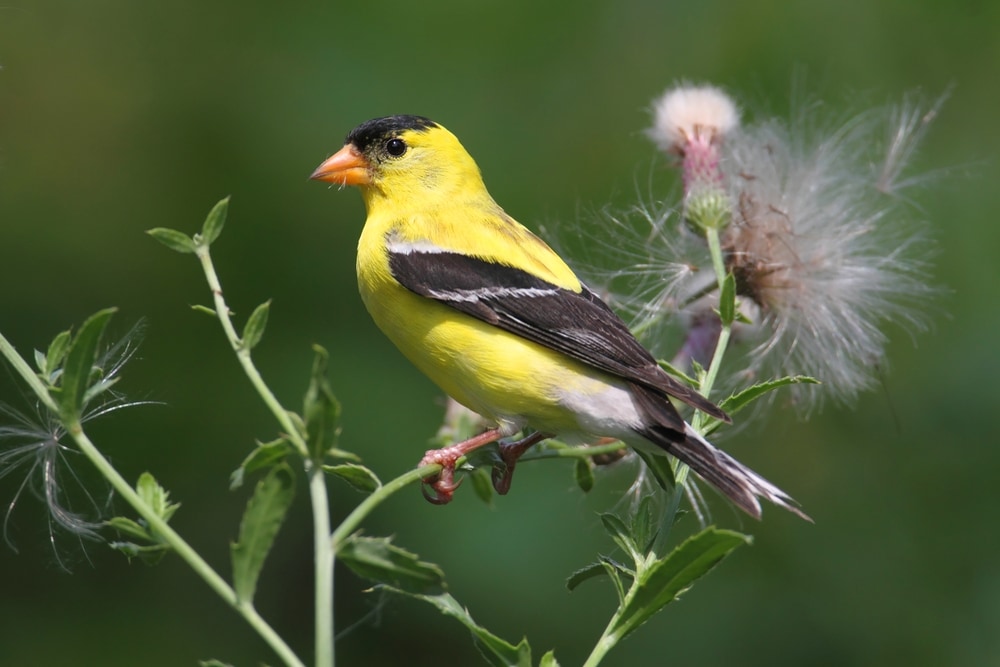
These abundant yellow birds in Ohio are often known as wild canaries. They occupy open landscapes and land habitats, including parks and gardens where you can find them eating food from feeders. This species is particularly conspicuous in spring and summer throughout the state, especially while nesting from July to August.
Canada Goose (Branta canadensis)
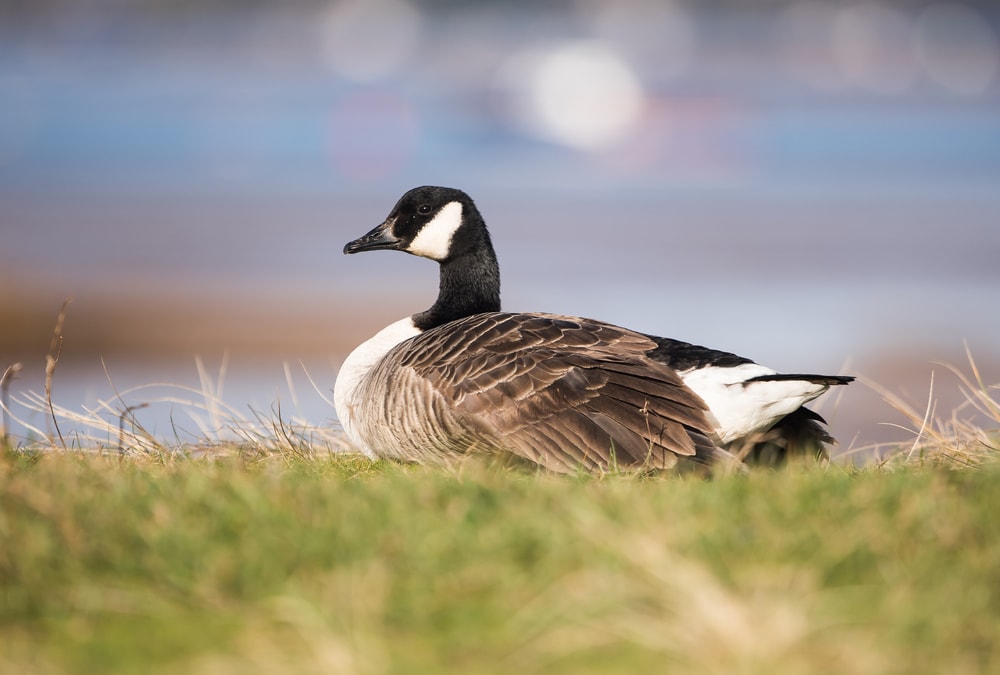
Canada Geese are common residential brown birds in Ohio. Even though you can spot them in all parts of this state, they rarely choose to spend time at the southeastern hills. This bird prefers lakes, ponds, open lawns, marshes, and other open areas, including golf courses. Keep in mind that the Federal Migratory Bird Treaty Act protects it.
Downy Woodpecker (Dryobates pubescens)

Downy Woodpeckers are widespread Ohio birds and the most versatile and smallest woodpeckers in this state. You can see this species in wooded areas and fields, but it is not unusual for this beauty to take residence in birdhouses. It is not too complicated to lure it to backyard feeders.
Red-bellied Woodpecker (Melanerpes carolinus)
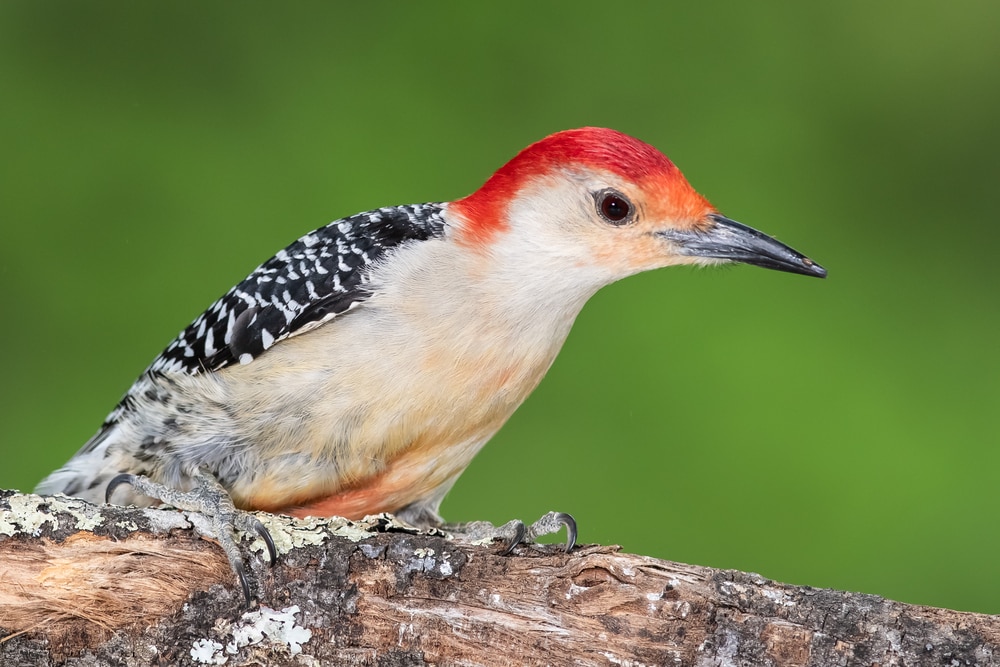
You can hear this quite big and conspicuous Red-bellied Woodpecker throughout Ohio woodlands and suburban yards. Nowadays, this species gets used to living in urban areas and often visits backyard feeders, as well. Look for it in the county parks, like Blendon Woods Metro Park in Columbus. Its breeding season is in spring, from April to May.
Red-winged Blackbird (Agelaius phoeniceus)
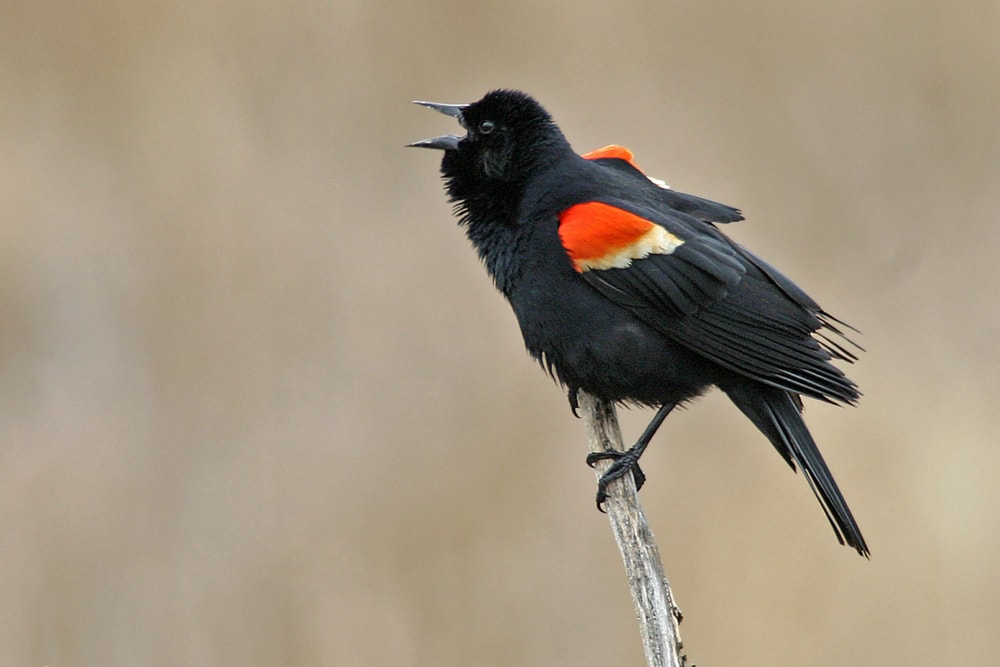
Red-winged Blackbirds are unique black birds in Ohio with recognizable red wings. You can see a male with a harem of approximately ten to fifteen females along the roadsides statewide, in marshes, wet meadows, or while perching and singing on wires or fences. These birds’ return is one of the favorite heralds of spring.
Ohio Landscape and Birding Seasons
You should plan your Ohio birding tour by season. Fall is ideal for hearing woodland singers’ songs and seeing American goldfinch and elusive Connecticut Warbler.
Wait for November to enjoy the flocks of Tundra Swans, while winter is the time for Ohio birds of prey like Red-tailed Hawks and American Kestrels. A fierce predator Great-horned Owl is the first to nest here in spring.
The primary breeding season starts in June, and it is the right time to look for Philadelphia Vireo and Yellow-bellied Flycatcher. Primary areas that provide habitat for nesting birds include:
Lake Metroparks
The three parks in this region are vital bird areas and of particular interest to birders. They offer a peaceful place for resting and feeding for most species from the Ohio migratory birds list.
Killdeer Plains Wildlife Area
The mix of forests, cropland, water, and grassland makes this fascinating area attractive for approximately 275 bird species during the year.
Lake Erie Birding Trail
It covers 84 premier locations for birds of northeast Ohio, including raptors, loons, waterfowl, gulls, and grebes. This part of the north coast is an accessible birding site divided into seven loops with similar habitat types.
Magee Marsh Wildlife Area
This exciting area is ideal for resting, feeding, and gatherings of the migrating songbirds, particularly warblers, before their flight to the north in spring.
Ohio Birding Hotspots
Ohio is one of the best destinations for bird watching in the US. You can find some ultimate hotspots there for enjoying this activity, among many available.
Headlands Beach SP
Headlands Beach State Park is a part of the Mentor Headlands area, with at least 130 officially tallied bird species and 334 bird species present during the spring migration. Since it is just a few miles away from Lake Erie Shoreline and includes dunes, marsh, open fields, and forest, you can expect wide bird diversity.
Killdeer Plains Wildlife Area
Killdeer Plains Wildlife Area is a home for numerous water birds of Ohio, including flocks of American Golden-plover and Lapland Longspurs in spring and American Avocets in fall. You can also see Northern Shrike and Northern Saw-whet Owl in winter, Short-eared Owl, and Bald Eagle year-round. Be careful since some parts of this area are off-limits to the public.
Metzger Marsh Wildlife Area
If you visit Metzger Marsh with approximately 70% of open shallow water, you will enjoy various Ohio waterfowl, including migrating ducks, gulls, egrets, herons, and terns. This stop on the Lake Erie Birding Trail is a home for Bald Eagle. Maybe you will be lucky to see a rare Yellow-headed Blackbird in summer and some swallows in fall.
Cleveland Lakefront Nature Preserve
Cleveland Lakefront Nature Preserve is an ultimate hotspot for birding in December. You can enjoy abundant waterfowl species and some rarities from time to time. Gulls are common here, but there are also many winter visitors like finches, juncos, and siskins. Look among the young trees for the White-throated Sparrow, Northern Saw-whet Owl, and Bed-breasted Nuthatch.
Buck Creek SP
One of the birding hotspots in Ohio is the Buck Creek State Park, blessed with the highest number of bird species officially noticed in the US. The most numerous birds during the winter are ducks and geese while surrounding fields attract American Tree Sparrow. Spring is the time for American White Pelicans, the giant white birds in Ohio.
Headlands Dunes State Nature Preserve
Headlands Dunes State Nature Preserve is a legendary site for finding rarities and numerous flocks of migrants. About 75% of all Ohio bird species come to this preserve of 25 acres (10 hectares). You can spot over 100 migrants in May and September and enjoy warblers, Red-breasted Mergansers, Bonaparte’s Gull, sparrows, and shorebirds.
Ottawa NWR (Ottawa Co.)
Ottawa National Wildlife Refuge is a huge complex that includes Crane Creek rich in shorebirds, wading birds, marsh birds, and several perching birds. Its estuary is also an excellent place to see Bald Eagle and ducks. Winter is time for Snow Geese, while Little Blue Heron and Snowy Egret come in spring.
Wendy Park, Whiskey Island
Most of Wendy Park is mowed grass lawn, but this place offers access to the river and lake, making it perfect for birding. The area is a real hotspot in this state to look for gulls, while rare Purple Sandpiper sometimes comes here in winter. Surrounding thicket is well known for songbirds in the peak migratory period.
Maumee Bay SP
You can find Maumee Bay State Park on the Maumee Bay south shore. This rich bird habitat is full of raptors in winter, including regular Long-eared and Short-eared Owls. Northern Goshawk, Rough-legged Hawk, and Snowy Owl come here occasionally. Spring arrives early, and you can see ducks, blackbirds, hawks, and occasionally Golden Eagle in that period.
Lorain Impoundment Lakeside Landing
Lorain Impoundment Lakeside Landing is highly attractive to birds, especially during fall and winter. Flocks of migrants come over the water to find shelter on the shore. This area, built up from the sludge, is an ideal place for 269 bird species, including numerous rarities. Recently, birders saw Brewer’s Sparrow here, which is the first time in this state.
Ohio Field Guides
A well-written Ohio bird guide is an essential, practical, and cheap book you will need to determine and distinguish bird species after seeing them in nature. Keep in mind that installed apps are convenient, but you can’t use your smartphone everywhere because of lack of signal or limited battery life.
Birds of Ohio Field Guide
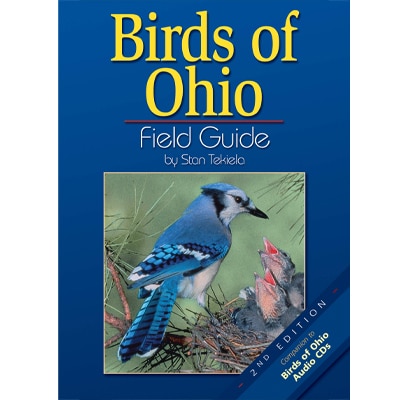
Birds of Ohio Field Guide, containing 111 described bird species you can see in Ohio, is one of 175 publications that naturalist Stan Teklela published. Its practical dimensions will allow you to put it in a Jacket pocket and bring it with you while bird watching. Birds are organized by color, which will make Ohio birds identification effortless and enjoyable.
American Birding Association Field Guide to Birds of Ohio
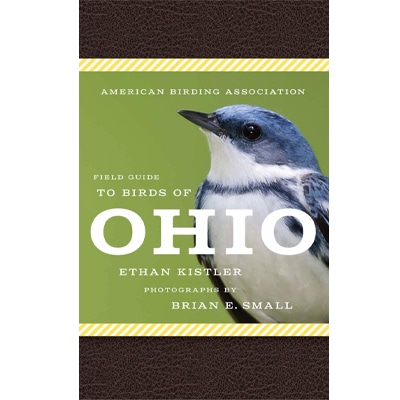
Author Ethan Kistler and Photographer Brian Small made an excellent guide for beginners and intermediate birders. It includes a satisfying Ohio bird list you can see in this state regularly. It provides beautiful photos, detailed bird descriptions, and information on the best places when and where you can find each species.
Birds of Ohio Field Guide
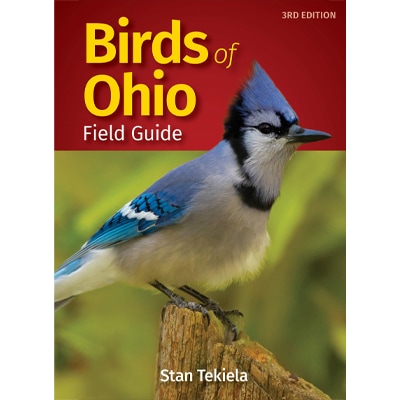
This Stan Tekiela’s book is the best-selling bird guide in Ohio and top-rated among novices and amateurs due to its easy readability and clear display. This convenient and small-sized publication describes 124 bird species, offers their photographs and useful range maps. You will enjoy notes with expanded information that makes bird watching even more enjoyable.
Ohio Bird Checklist
Ohio bird checklist includes 450 bird species found in Ohio, including one breeding endemics and 16 introduced species. If you live in this state or want to visit it in the future, you will find this Avibase very useful and practical. It is based on the regularly modifying information available, which makes it highly valuable.
Download FREE Ohio Bird Checklist PDF
Click here for an overview of Ohio Birds
Specific Bird Species
Thanks to the long Lake Erie shoreline, national historic parks, and wildlife refuges, Ohio is an ideal birding location for watching various specific bird species.
Woodpeckers in Ohio
These lovely birds are cavity nesters, so they enjoy Ohio’s coniferous forests, swampland, and urban areas with large trees. While Downy Woodpecker is the most common, Red-bellied Woodpecker is one of the most prominent Ohio winter birds and rare aerial hunters among seven different species living in Mohican State Park during winter.
Owls in Ohio
Eight different owl species live in Buckeye State, including the most frequent Eastern Screech Owls and Great Gray Owls, beautiful gray birds in Ohio. They often spend a year in the Magee Marsh and Killdeer Plains, depending on the species. Snowy Owl is rare in this state, but it has started coming on the south shore of the lake again.
Finches in Ohio
You can find nine different finch species in this northeastern state, including most commonly House Finch. Purple Finches are small birds of Ohio that come here in winter, outside the breeding season. American Goldfinch is a passerine bird that often visits yards and parks year-round, including the breeding season.
Warblers in Ohio
Northwest Ohio is considered the world Warbler Capital. Marshlands around Lake Erie’s south part are ideal habitats for finding over twenty of these beautiful bird species. They start coming in May after a grueling migration and become stars of the Biggest Week in American Birding. Look for Yellow-throated Warbler when going south.
Wrens in Ohio
Carolina Wren is a year-round resident statewide, while Sedge Wren is a rarity that occasionally appears on the northwestern territory in July and August. You can see House Wrens, lovely Ohio backyard birds, nestling in human-made boxes, but you need to be persistent to see Marsh Wrens that strictly live in wetlands.
Sparrows in Ohio
White-crowned Sparrow and White-throated Sparrow are two distinctive Ohio winter residents. You can find them in thickets and overgrown meadows until spring migration while looking for food. Henslow’s Sparrow is the rare sparrow in the eastern US, and most birders overlook it. Be persistent and find this dedicated singer in southeastern state’s reclaimed strip mines.
Hawks in Ohio
Ohio landscape caters well to eight different hawk species, including the most common Red-tailed Hawk seen at open fields year-round. On the other hand, Cooper’s Hawks prefer wooded areas, but it also stalks bird feeders. You can also see Broad-winged Hawk near tree lines and water sources from April to August throughout its breeding months.
Bluebirds in Ohio
The Eastern Bluebird, one of three bluebird species native to the US, has the breeding season in Ohio from March to August. Unfortunately, the population of this state’s most celebrated bird has declined by 90% since the 1900s. Beautiful Mountain Bluebird is a notorious wanderer that regularly appears in the east part of this state in winter.
Hummingbirds in Ohio
You can see six different species confirmed as Ohio residents. Ruby-throated Hummingbird living in meadows and orchards is the most common type in Ohio statewide. The best period to notice aggressive orange Rufous Hummingbird in central Ohio regions is in autumn. If you are lucky, you can spot Calliope Hummingbird, a rare type appearing annually in this state.
Grackles in Ohio
You can see Common grackle year-round in northeast Ohio. Even though this bird thrives in different habitats, it usually nests in coniferous trees near water. Loud and social Great-tailed Grackles are rare large birds in Ohio, but you can occasionally find them on open groves, farmland, and feedlots, usually near water.
FAQ
What is the most common bird in Ohio?
The Mourning Dove is the most common and widespread Ohio bird species, thanks to its high reproductive rate, quick adaptability, and generalized habitat.
What kinds of birds live in Ohio?
With 433 resident and migratory bird species, Ohio is a home for about half of all recorded bird species living in the US during the year.
How Many Species of Birds are there in Ohio?
The official Ohio birds list covers 433 bird species, including 193 documented ones that breed in the state, eight introduced to the US, two extinct, and two extirpated.
What Birds Stay In Ohio During Winter?
Birds native to Ohio gather in large flocks during winter, searching for safe shelter and food, while raptors, titmice, nuthatches, and chickadees come south for winter vacations.
What Is the Largest Hawk in Ohio?
Nine of 25 different hawk species in the US live in Ohio, including the biggest Red-tailed Hawk, which is also the second-largest Buteo hawk in the US.
What Is the Smallest Bird in Ohio?
The smallest types of birds in Ohio are tiny Ruby-throated Hummingbird, difficult-to-find Winter Wren, unique Ruby-crowned Kinglet, elegant Golden-crowned Kinglet, and long-tailed Blue-gray Gnatcatcher.
Do Finches Stay In Ohio In Winter?
If you learn how to recognize migratory Purple Finch and differentiate it from the more common House Finch, you will enjoy this uncommon winter visitor in northern Ohio.
What Is the Largest Woodpecker in Ohio?
About 16 to 19 inches (40.5 – 48 cm) long, crow-sized Pileated Woodpecker is the largest woodpecker in Ohio and the US, but it is pretty hard to see.


You don’t mention the Bald Eagles that populate parts of the state. We’ve had them eating deer carcasses.
Where are the birds right now?? I am not seeing any at all. I just put my feeders out and normally have a ton of birds every winter titmice, nuthatches, wren, blue jay, cardinals, chickadee , several different woodpeckers but I haven’t seen any birds at all not even in the sky?? What’s going on?
We have some birds here in Northwest Ohio, that are brown in color, and when they fly, and wings are outstretched, there is a white strip of feathers that show while they fly… they are very pleasant to listen to. Just wondering what they are called, as I can’t find a picture that resembles them…
Northern Mockingbirds’ wings appear white underneath. That would be my first guess. You could try the Merlin app for bird identification if the mockingbird doesn’t fit. Hope this helps!
— Hailey Brophy
Writer @ World Birds